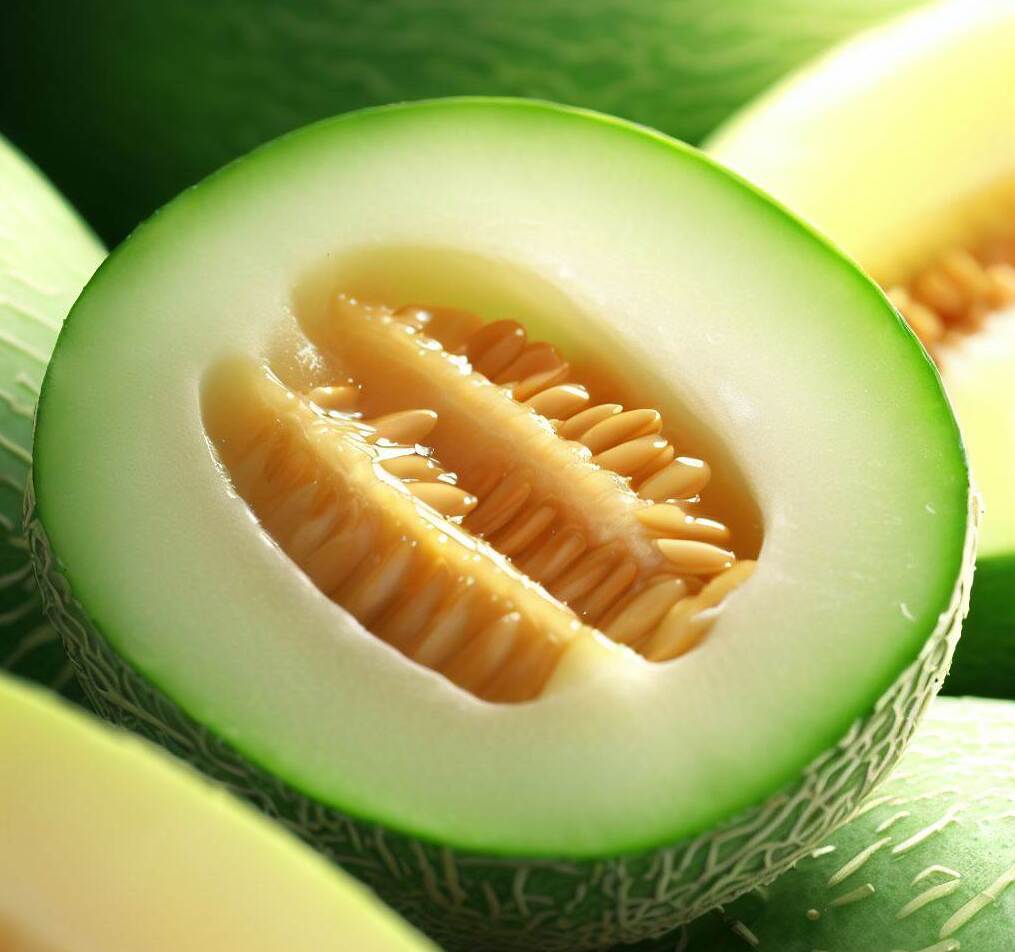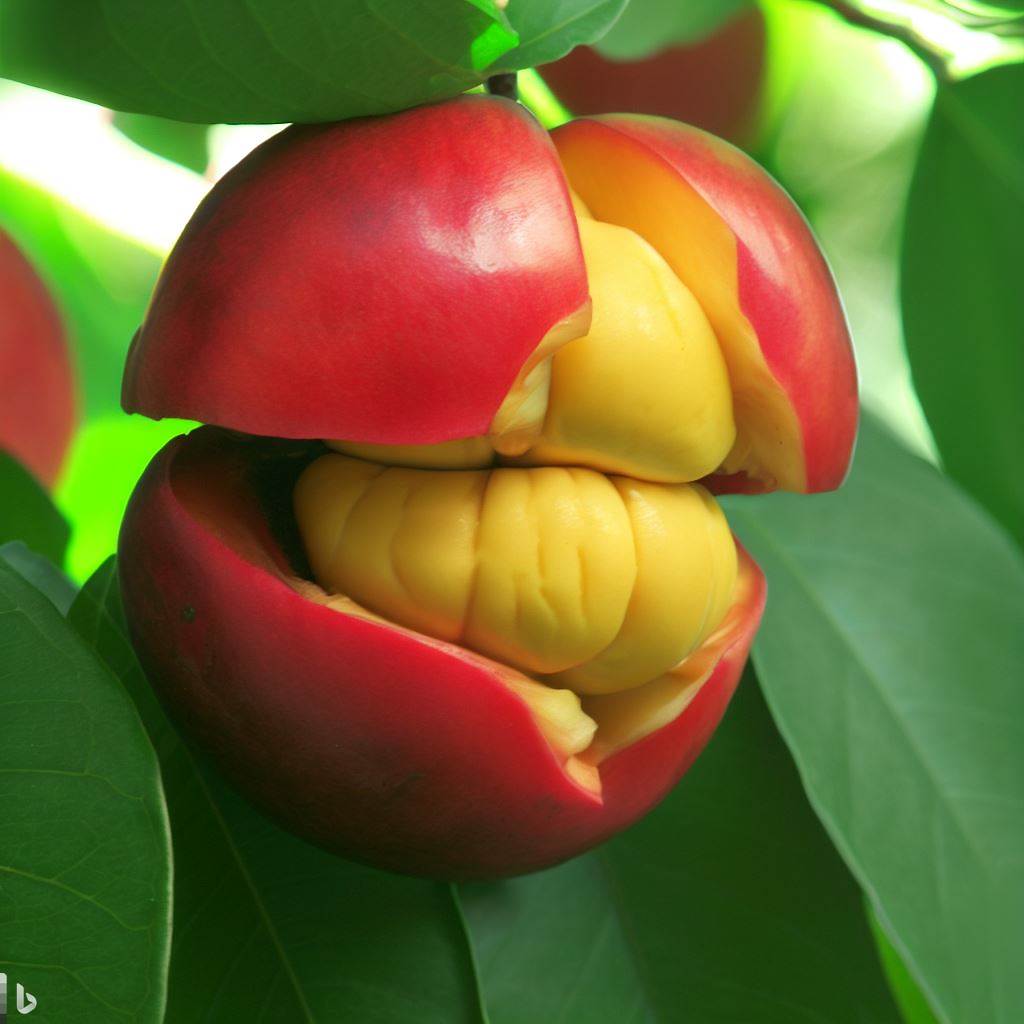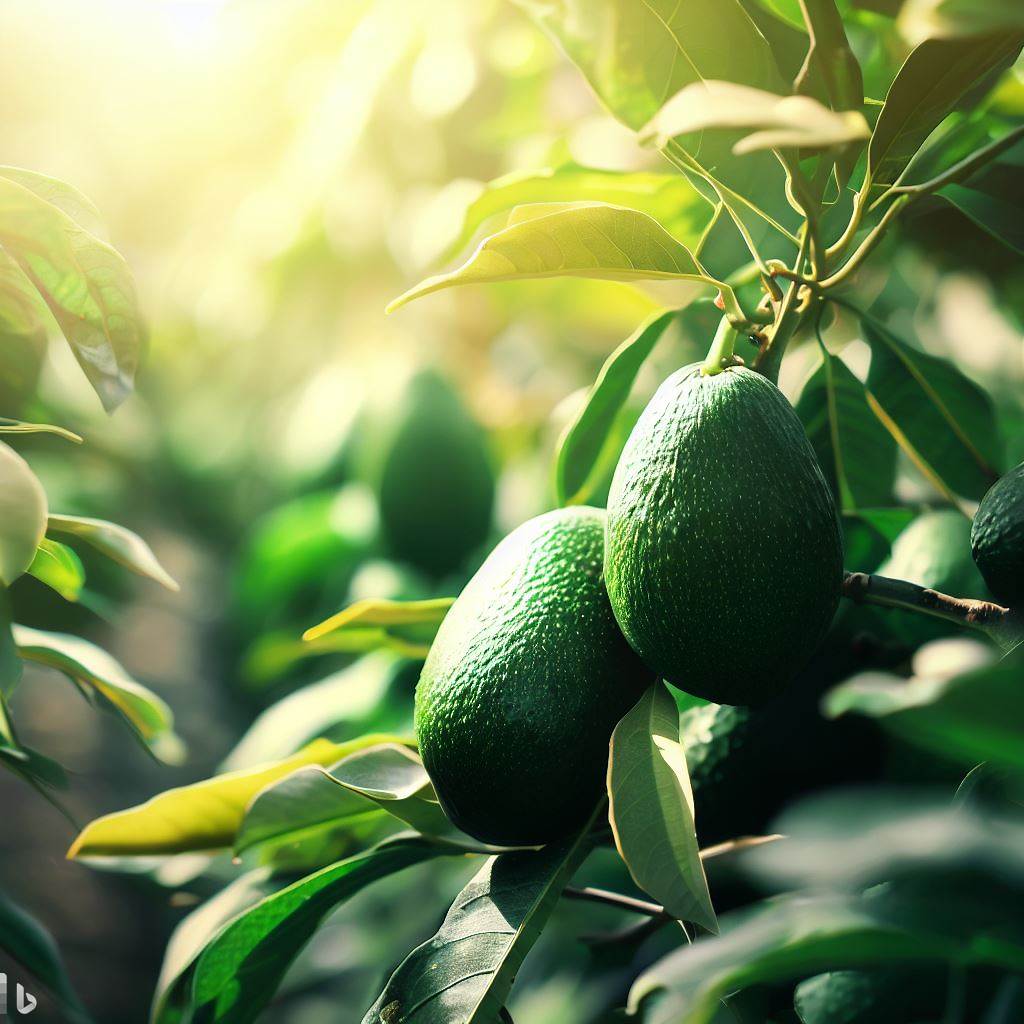Introduction
The honeydew melon is an invigorating fruit that occupies a position, in the realm of melons. With its taste and velvety consistency it has become a choice for those who appreciate the wonders of fruit. This encompassing manual will take you on an exploration through the captivating universe of honeydew melons shedding light on topics such as cultivation methods, nutritional significance, positive impacts, on health diverse culinary applications and even potential drawbacks.
Overview of Honeydew Melon
Honeydew melon, scientifically known as Cucumis melo L. in the gourd family, is a round or oval-shaped fruit. It is characterized by its thick, greenish-yellow rind and succulent, pale green flesh. The melon’s sweet aroma and luscious taste contribute to its popularity.
Historical Significance
The honeydew melon has a history that dates back centuries originating from Persia, which is now modern day Iran. Over time it made its way, across the Mediterranean region. Eventually reached Europe and the Americas. As a result the honeydew melon has gained popularity as a fruit that can be found in markets, around the world.
Cultivation Statistics
Honeydew melon cultivation is widespread, with several countries leading in production. China, the United States, Turkey, Mexico, and Iran are among the top honeydew melon producers globally. The favorable climate and agricultural practices in these regions contribute to the success of honeydew melon cultivation.
Farming Honeydew Melon
Farming honeydew melon requires specific knowledge of the different varieties, climate and soil requirements, as well as planting and harvesting techniques.
Honeydew Melon Varieties

Popular Varieties
Popular honeydew melon varieties include the Green Flesh, Orange Flesh, and Yellow Flesh. These varieties are known for their distinct flavors and colors, providing consumers with a range of options.
Unique Varieties
Apart from the common honeydew melon varieties, there are some unique cultivars available. Examples include the Casaba Melon and the Santa Claus Melon, each offering its own distinct taste and appearance.
Climate and Soil Requirements
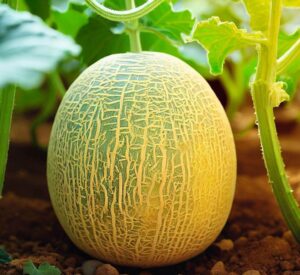
Ideal Growing Conditions
Honeydew melons grow best in regions that have temperate climates, where the ideal daytime temperatures range from 75 to 85°F (24 to 29°C). These melons need plenty of sunlight and drained soil to grow and thrive.
Soil Preparation Tips
To ensure growth of honeydew melons it is crucial to prepare the soil. This includes eliminating any weeds already present loosening the soil, for water drainage and enriching its fertility by incorporating matter like compost.
Planting and Harvesting

Propagation Methods
Honeydew melon can be grown by either sowing the seeds into the soil or, by starting seedlings indoors and then transferring them to the garden.
Optimal Planting Time
The optimal time for planting honeydew melon depends on the climate and local growing conditions. Generally, it is best to plant the seeds or seedlings after the danger of frost has passed and when soil temperatures reach around 60°F (15.5°C).
Harvesting Techniques
Honeydew melons are typically ready to be harvested within a span of 40 to 90 days after they are planted depending on the variety. To ascertain the ripeness of a melon one can evaluate factors such, as its skin color, fragrance and firmness. Gently pressing the blossom end of the fruit should yield slight give.
Nutritional Value of Honeydew Melon
Honeydew melon is not only delicious but also packed with essential nutrients that contribute to overall health and well-being.
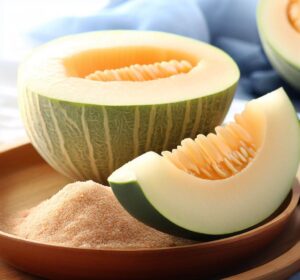
Macro and Micro Nutrients
Honeydew melon is a fruit that’s low, in calories and mainly composed of carbohydrates and water. It also has an amount of proteins and little fat.
When it comes to vitamins and minerals honeydew melon is packed with goodness. It’s a source of vitamin C, vitamin A, vitamin K well as several B vitamins. Additionally it provides minerals, like potassium, calcium, magnesium and copper.
Antioxidant Content
Honeydew melon is loaded with these amazing antioxidants like vitamin C, beta-carotene, lutein, and zeaxanthin. It’s like a delicious shield of goodness! So, when we munch on that juicy and tasty honeydew melon, we’re actually giving our bodies a boost of natural defenses to stay healthy and happy.
Health Benefits of Honeydew Melon
Consuming honeydew melon can have numerous positive effects on overall health and well-being.
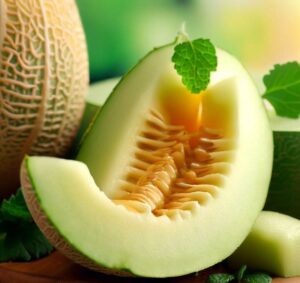
Hydration and Digestive Health
Honeydew melon’s high water content helps to keep the body hydrated, aiding in proper digestion and preventing constipation.
Boosting the Immune System
The immune system is fortified by the vitamins and antioxidants found in honeydew melon, which aids in preventing infections and diseases.
Want to maintain youthful skin?
Honeydew melon can help! With its vitamins A and C and antioxidants, it supports collagen production and guards the skin against oxidative damage.
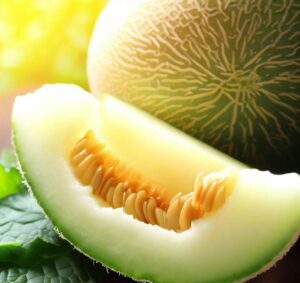
Weight Management and Metabolism
Because honeydew melon is low, in calories and has a water content it can be an addition, to weight management plans. Additionally it contains fiber that aids in promoting a feeling of fullness and regulating metabolism.
Eye Health and Vision Protection
The inclusion of lutein and zeaxanthin, in melon plays a role, in maintaining eye health. It helps safeguard against age related macular degeneration. Lowers the chances of developing cataracts.
Heart Health and Blood Pressure Regulation
The potassium content of honeydew melon supports heart health by regulating blood pressure levels and maintaining proper heart function.
Culinary Uses of Honeydew Melon
Honeydew melon’s versatile nature allows it to be used in various culinary preparations, adding a delightful burst of flavor and texture.
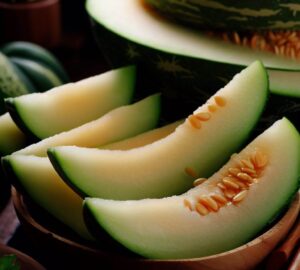
Fresh and Raw Consumption
Culinary Preparations
Honeydew melon is often enjoyed fresh and uncooked either by itself or combined with fruits, in fruit salads. You can cut it into cubes, slices. Even scoop it into balls to make it look more appealing.
Pairing Suggestions
Honeydew melon goes great with a range of ingredients, like mint, zesty citrus fruits, juicy berries, crumbly feta cheese, savory prosciutto and creamy yogurt. These combinations create refreshing and vibrant taste experiences.
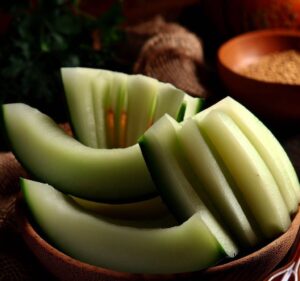
Juicing and Smoothies
Honeydew melon is an addition, to juices and smoothies due, to its sweet and juicy flesh. Its subtle taste combines harmoniously with fruits, vegetables and even herbs.
Honeydew Melon in Salads and Salsas
Adding diced honeydew melon to salads and salsas adds a refreshing element and a slightly sweet taste. It complements both savory and spicy dishes.
Desserts and Frozen Treats
Recipe Ideas
You can use melon to make desserts, like honeydew melon sorbet honeydew melon mousse and honeydew melon granita. These desserts showcase the fruit’s natural sweetness.
Honeydew Sorbet and Popsicles
To stay cool during the summer why not give honeydew sorbet or honeydew melon popsicles a try? These icy delights are guaranteed to be a crowd pleaser, among kids and grown ups.
Side Effects and Precautions
Honeydew melon is generally safe for consumption. Here are some precautions to take into account when adding it to your diet.
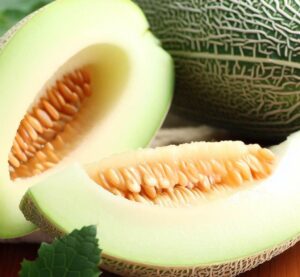
Allergic Reactions
People who have allergies, to melons should be careful when eating melon because it can potentially cause reactions such, as itchiness, swelling and trouble breathing.
Sugar Content and Glycemic Index
If you have diabetes or are watching your sugar intake, be mindful of honeydew melon as it contains natural sugars and has a medium glycemic index.
Pesticide Residue Concerns
To minimize pesticide exposure, it is recommended to choose organic honeydew melons whenever possible. Washing conventionally grown honeydew melons thoroughly before consumption can also reduce pesticide residue.
Digestive Upset and Overconsumption
Eating excessive honeydew melon may cause digestive discomfort like bloating and diarrhea. Enjoy it in moderation to prevent these effects.
Summary and Conclusion
Honeydew melon, with its enticing flavor, nutritional benefits, and versatile culinary uses, is truly a remarkable fruit.
FAQ’s
A. Can honeydew melon be included in a low-carb diet?
Including honeydew melon in a low-carb diet is possible, but be mindful of the natural sugars.
B. What is the best way to choose a ripe honeydew melon?
The best way to pick a ripe honeydew melon is to go for the one that smells nice, has a slightly soft end when you press it, and feels heavy compared to its size.
C. Can honeydew melon consumption cause weight gain?
Honeydew melon consumption is unlikely to cause weight gain due to its low calorie and high water content.
D. Are there any alternative uses for honeydew melon?
Yes, there are other ways to use honeydew melon besides eating it fresh. You can blend it into smoothies or make refreshing fruit salads.
E. How does honeydew melon compare to other melon varieties nutritionally?
Among melon varieties, honeydew stands out with its specific nutritional content, which differs from cantaloupe and watermelon.

